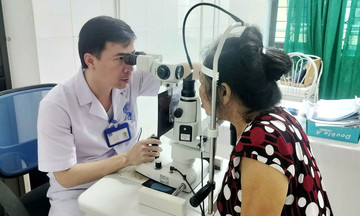The wrist is a complex joint made up of multiple smaller joints and bones, connecting the hand to the forearm. It is almost constantly in motion, flexing, extending, and rotating. Dr. Tran Ngoc Chon, from the Orthopedic Trauma Unit at Tam Anh General Clinic, District 7, explains that wrist pain can be caused by injuries or abnormalities related to bones, muscles, tendons, ligaments, or blood vessels. This condition is common in people who frequently use their wrists, such as office workers, assembly line workers, manual laborers, athletes, the elderly, and those with previous wrist injuries.
Here are some common causes of wrist pain:
Sports injuries: Activities like gym workouts, push-ups, badminton, tennis, and volleyball involve repetitive wrist movements. Excessive strain can cause sprains and nerve compression, leading to wrist pain.
Lifestyle habits: Continuous phone use can cause tendonitis in the thumb, which is connected to the wrist, resulting in pain, numbness, or tingling throughout the thumb, hand, and wrist. Sleeping with your head resting on your hand can reduce blood flow to the wrist, causing pain. High consumption of alcohol, salt, and sugar increases the risk of swelling and edema, also contributing to pain.
Cartilage damage: A tear in the triangular fibrocartilage complex (TFCC) causes pain on the outside of the wrist, often accompanied by a clicking sound and difficulty in movement. Osteoarthritis causes the cartilage covering the joints to wear down and become inflamed, leading to swelling and pain in the wrist.
Arthritis: Common forms of arthritis include rheumatoid arthritis (an autoimmune disease that damages and degenerates joints), gout (causing redness, swelling, and pain in the affected area), and infectious arthritis of the wrist. All these can cause significant wrist pain.
 |
Dr. Chon examines a patient's wrist and hand function. Photo: *Tam Anh General Clinic, District 7* |
Depending on the cause and severity of the wrist pain, doctors may recommend treatments such as non-steroidal anti-inflammatory drugs (NSAIDs) or cortisone injections for pain caused by tendonitis or arthritis. Physical therapy may be necessary to reduce wrist osteoarthritis and stiffness, alleviate pain, and strengthen the affected area. In cases of wrist pain due to fractures, ganglion cysts, or nerve compression, surgery may be required.
Patients should avoid strenuous wrist movements and repetitive actions, but gentle movement is encouraged to prevent stiffness. Applying a cold compress for 20 minutes every 3-4 hours for the first two days (for acute sprains) can help, but avoid exceeding 20 minutes per application to prevent tissue damage.
Persistent wrist pain can be a warning sign of serious conditions such as infection, cancer, or osteoarthritis. It is crucial to seek medical attention for timely treatment to prevent interference with daily activities.
Phi Hong
| Readers can submit questions about musculoskeletal diseases here for doctors to answer. |












